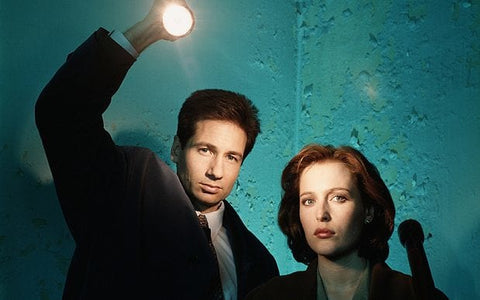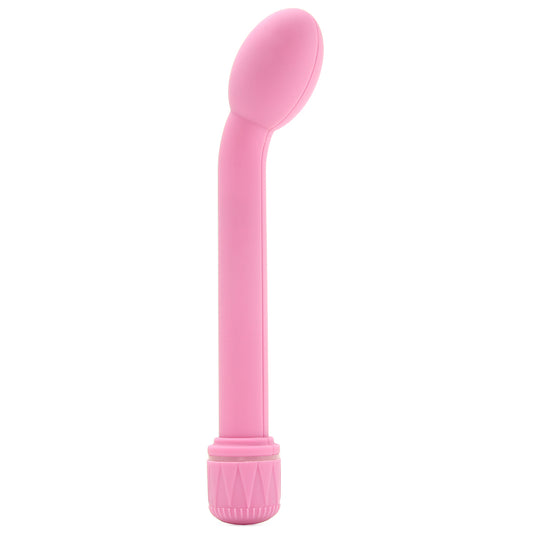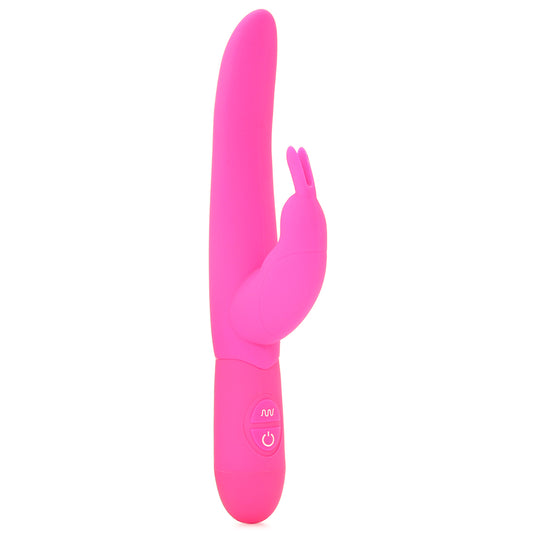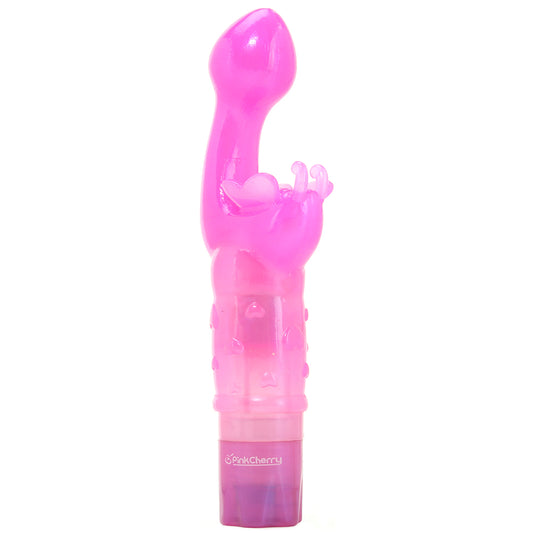
Question: Do you believe in aliens? If yes, then you’ll probably agree that our interplanetary buddies need to be able to get from galactic point A to galactic point B, right? So...UFO’s would have to be real, too. Everyone needs transportation! What in the world, you may ask, does any of this have to do with the G-spot? Maybe you’re aware that the existence of the G-spot hasn’t been formally acknowledged by any scientific, medical or gynecological community. If you weren’t, true story! In fact (and this is where our extraterrestrial reference comes into play), some researchers have dubbed the G-spot a ‘gynecological UFO’ - lots of sightings but no confirmation.
Whether or not you agree with the whole UFO comparison, perhaps you have some thoughts of your own concerning the G-spot? I do, and most of the women I polled and researched to prep for this article did as well. Just like the existence of aliens, there seems to be a pretty big divide in opinion. For instance, right before I started writing, I asked a friend if she thought the G-spot existed. She said “No way. That’s what the clit is for.” I, on the other hand say “Yes, it 100% exists!” Two people might not seem like much of a study (it isn’t, we agree), but around 50/50 seems about right. For instance, a proper poll done by a London university in 2009 looked at 1804 identical female twins between the ages of 22 and 83. Even though 56% of the twins claimed to have a G-spot, their respective twin didn’t necessarily respond the same way. Weird, since anatomically, identical twins would be, well, identical! Also, that clears up exactly nothing about the G-spot’s existence. We’re going to try to solve this mystery today, or at least get to the bottom of why the G-Spot debate is still going strong.
What is it?
The so-called G-Spot is an area of extreme sensitivity located at the top (anterior) wall of the vagina. G-spot believers swear that stimulation of this area via a toy, a penis or a partner can bring on what’s known as vaginal orgasm (also known as a myth by some), or at least a much more powerful or blended orgasm when combined with outer clitoral stimulation. The G-spot is also assumed to be the source of female ejaculation (yes, it’s a real thing, and we’ll look into it soon, stay tuned!). The G-spot was ‘discovered’ in the early 1900’s by German doctor and scientist Ernst Grafenberg, who was researching the role of the urethra in female orgasm. He, of course, named the ‘discovery’ after himself. Dr. G is also credited with inventing the IUD, by the way.
So, is the G-spot real?
 From a strictly biological standpoint, no. But that only means that there doesn’t seem to be an actual physical structure that researchers have been able to find. A study was done just last year on the vaginal anatomy of 13 female cadavers aged 32 to 97. The cadavers were dissected and their vaginal anterior walls, urethras and clitorises (clitorii?) examined for the existence of tissue, glands or otherwise that could account for the G-Spot claim. The results? Nada. There was no evidence of anything in or around the anterior wall of the vagina that would explain heightened sensitivity. The only thing that lies behind the top wall of the vagina is the urethra. The report goes on to state that there is no evidence of any erectile tissue in the anterior vaginal wall “except where the the urethra abuts the clitoris distally.” Meaning that except for the clitoris, there’s no physical vaginal entity that would be capable of swelling, engorging or becoming more sensitive in general. Except for the clitoris. EXCEPT FOR THE CLITORIS. This is important! Remember it.
From a strictly biological standpoint, no. But that only means that there doesn’t seem to be an actual physical structure that researchers have been able to find. A study was done just last year on the vaginal anatomy of 13 female cadavers aged 32 to 97. The cadavers were dissected and their vaginal anterior walls, urethras and clitorises (clitorii?) examined for the existence of tissue, glands or otherwise that could account for the G-Spot claim. The results? Nada. There was no evidence of anything in or around the anterior wall of the vagina that would explain heightened sensitivity. The only thing that lies behind the top wall of the vagina is the urethra. The report goes on to state that there is no evidence of any erectile tissue in the anterior vaginal wall “except where the the urethra abuts the clitoris distally.” Meaning that except for the clitoris, there’s no physical vaginal entity that would be capable of swelling, engorging or becoming more sensitive in general. Except for the clitoris. EXCEPT FOR THE CLITORIS. This is important! Remember it.
The Clit Theory
While some researchers were doing their darndest to prove the G-spot a myth, even as many of us (and our partners) insisted that it definitely was not, at least one science type thought there was more to explore. Urology expert Dr. Amichai Kilchevsky was quoted in a 2012 Journal of Sexual Medicine study as saying that even though there is no actual structure to be found, there are “reliable reports and anecdotal testimonials of the existence of a highly sensitive area in the distal anterior vaginal wall” and that those testimonials (and orgasms!) “raise the question of whether enough investigative modalities have been implemented in the search of the G‐spot.” Basically, he was saying that even though there’s no physical evidence of a G-spot, there’s definitely something going on. Perhaps the recent cadaver study was inspired by Kilchevsky, perhaps not, but in any case, it doesn’t seem to have shed any light on the existence of the G-spot. It was already known that there was no actual visible or biological entity that could explain it away. So what is the explanation? Magic? Nope, the clitoris!
Several scientists including another urologist (and published clitoris expert), Dr. Helen O’Connoll out of Melbourne Australia, have a brilliant G-spot theory, and it makes tons of sense! Here’s a little background. The clitoris is much, much more than a little nub of super-sensitive tissue above the vaginal opening. That little nub is only a teeny tiny section of a much larger internal structure - the ‘clitoral urethral vagina complex’ or CUV. No, it’s not as snappy as ‘G-spot’, but these are scientists, we’ll give them a pass on the boring name.
If you think of the clitoris as a wishbone, only the very tip of the single, straight portion is what can be seen and felt externally. The rest of that straight section extends up into the pelvis and eventually anchors to the pubic bone. Two branches (or legs, if you prefer) tipped by vestibular bulbs or glands extend outward, running parallel to the urethra and vaginal canal. When its owner becomes aroused, the entire clitoris engorges with blood. Those internal clitoral bulbs swell, compressing the walls of the vagina as they squeeze closer to the...wait for it...anterior vaginal wall! You might remember the anterior wall as the location of the G-spot. In other words, what we think of as the G-spot could be (and probably is) actually the internal portion of the clitoris. When we, a toy, or a partner press up on that spot, we’re stimulating the clitoris from the inside. When and if we do double duty and directly stimulate the outer, visible area of the clitoris as well, it stands to reason that we’d feel double (or more!) the pleasure.
You may be wondering why it’s taken so long to uncover the mystery of the G-spot, and we were, too. We kind of hate the answer, but here it is. The wonderful, fantastic, magical orgasm powerhouse that is the clitoris serves no important bodily function other than pleasure. We’d classify orgasms as a pretty important bodily function ourselves, but then again, we aren’t scientists. Anyway, since there’s no vital, medically or physiologically necessary purpose to the clitoris, no one had ever bothered to look into it too deeply. More to our topic, that lack of research is likely why no one ever connected the clitoris to the G-spot.
So why do some women claim to have a G-spot while others don’t?
This is kind of a mystery, to be honest, but here are some theories. First, women who say ‘no way’ to the existence of the G-spot may not have explored (or had a partner explore) their vagina in a way that would stimulate the G-Spot (clitoral urethral vagina complex, whatever). There’s a lack of body knowledge to partly blame for this, as we talked about just above, as well as the (very) incorrect assumption that straight up penis-(or dildo)-in-vagina sex should automatically equal pleasure. We know that 70% of women require, not just enjoy, but REQUIRE external clitoral stimulation to reach orgasm, so G-spot aside, a large majority of vagina owners can’t get there through penetration alone.
Some women may have tried and failed to find the G-spot, automatically assuming they don’t have it or can’t get to it. Problem is, the tried and true G-Spot stimulating method we’ve probably all read about doesn’t necessarily work for every body. Most ‘How to Find the G-spot’ guides will happily tell you to simply insert a finger or toy or two a few inches in, and press upward in a ‘come here’ beckoning motion. First off, we know all bodies are different, so one G-spotting method isn’t going to fit all. Also, some vaginal walls are thicker than others and the positioning of places that feel good aren’t going to be exactly the same for everyone. You’re going to have to spend some time exploring, is what we’re getting at. We do know that if the G-spot is indeed an extension of the clitoris, then arousal is important. Very important. Get comfy. Get turned on. Watch something hot, read something sexy, make out with your partner for a full five minutes, whatever does the trick. Then use (or have them use) one of our g-spot vibes, a curvy g-spot dildo or a finger to experiment with pressure, depth, stroking and positioning.
Of course, it’s also entirely possible that some women just don’t like the sensation of having their upper vaginal wall stimulated. That’s okay! As long as everyone’s getting off, our work is done.
On that note, we’re going to wrap up today’s exploration of the G-spot. We should probably make that ‘G’ stand for something else, though. Good, great, gratifying or grand, maybe. Because let’s face it, ‘the clitoral urethral vagina complex’, while it may be very real, just doesn’t have the same ring to it!







